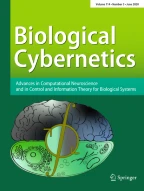Abstract.
Biological memories have a number of unique features, including (1) hierarchical, reciprocally interacting layers, (2) lateral inhibitory interactions within layers, and (3) Hebbian synaptic modifications. We incorporate these key features into a mathematical and computational model in which we derive and study Hebbian learning dynamics and recall dynamics. Introducing the construct of a feasible memory (a memory that formally responds correctly to a specified collection of noisy cues that are known in advance), we study stability and convergence of the two kinds of dynamics by both analytical and computational methods. A conservation law for memory feasibility under Hebbian dynamics is derived. An infomax net is one where the synaptic weights resolve the most uncertainty about a neural input based on knowledge of the output. The infomax notion is described and is used to grade memories and memory performance. We characterize the recall dynamics of the most favorable solutions from an infomax perspective. This characterization includes the dynamical behavior when the net is presented with external stimuli (noisy cues) and a description of the accuracy of recall. The observed richness of dynamical behavior, such as its initial state sensitivity, provides some hints for possible biological parallels to this model.
Similar content being viewed by others
Author information
Authors and Affiliations
Additional information
Received: 26 December 1995 / Accepted: 14 November 1997
Rights and permissions
About this article
Cite this article
Kairiss, E., Miranker, W. Cortical memory dynamics. Biol Cybern 78, 277–292 (1998). https://doi.org/10.1007/s004220050433
Issue Date:
DOI: https://doi.org/10.1007/s004220050433
